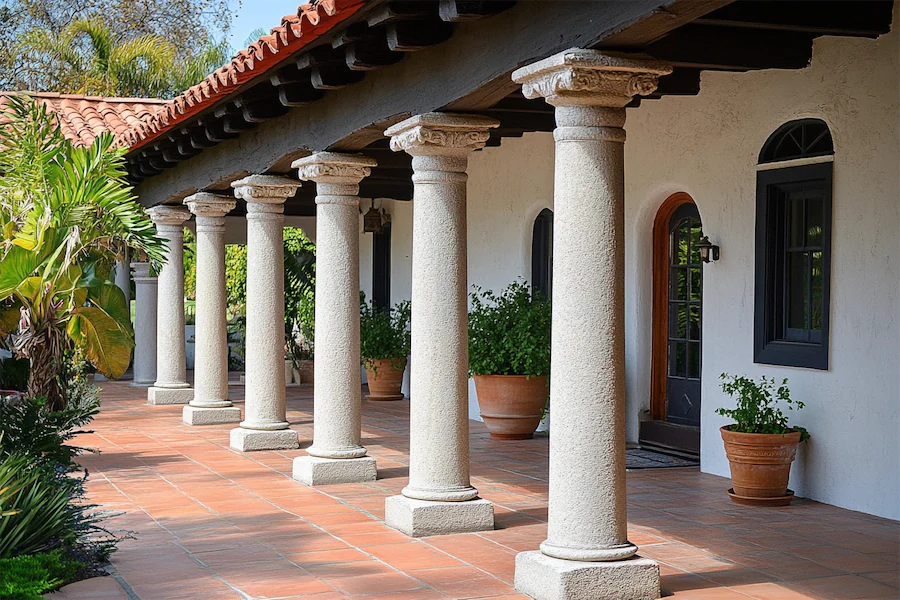Spanish Revival architecture, also known as Spanish Colonial Revival, emerged in the early 20th century, drawing inspiration from the Spanish colonial architecture of the Americas. This style is characterized by its romantic and eclectic aesthetic, prominently featuring columns that serve both structural and decorative purposes.
History and Origins of Spanish Revival Columns
The Spanish Colonial Revival style gained popularity in the United States after the Panama-California Exposition held in San Diego in 1915. This movement sought to revive elements from Spanish colonial architecture, incorporating features such as arches, stucco walls, and red-tiled roofs. Columns became integral to this style, often supporting arcades and verandas, contributing to the overall aesthetic and functionality of the structures.
Key Features of Spanish Revival Columns
Spanish Revival columns exhibit several distinctive characteristics:
- Ornate Carvings: Columns often feature intricate low-relief carvings, highlighting arches, window surrounds, and cornices.
- Material and Finish: Traditionally constructed from stone or brick, these columns are frequently finished with plaster or stucco, aligning with the overall texture of Spanish Revival buildings.
- Classical Influence: Many columns reflect classical orders, such as Doric or Corinthian, adding a touch of elegance to the structures.
Applications of Columns in Spanish Revival Architecture
In Spanish Revival architecture, columns serve both structural and decorative roles:
- Arcades and Verandas: Columns support arcaded porches and verandas, creating shaded outdoor spaces that facilitate a seamless indoor-outdoor living experience.
- Entrances and Facades: They frame entrances and adorn facades, enhancing the visual appeal and providing a sense of grandeur.
- Courtyards and Patios: Columns define the perimeters of courtyards and patios, contributing to the creation of inviting communal areas.
Considerations When Incorporating Columns
When integrating columns into Spanish Revival designs, consider the following:
- Proportionality: Ensure that the size and style of the columns are proportionate to the building’s overall dimensions and architectural elements.
- Material Selection: Choose materials that not only align with the aesthetic but also offer durability and low maintenance, especially in regions with climates similar to the Mediterranean.
- Historical Accuracy: For authentic designs, adhere to traditional decorative motifs and construction techniques characteristic of the Spanish Revival style.
Conclusion
Columns are a defining feature of Spanish Revival architecture, embodying a rich historical legacy and contributing to the style’s timeless elegance. Their thoughtful incorporation enhances both the structural integrity and aesthetic appeal of Spanish Revival structures, making them enduring symbols of this architectural tradition.
